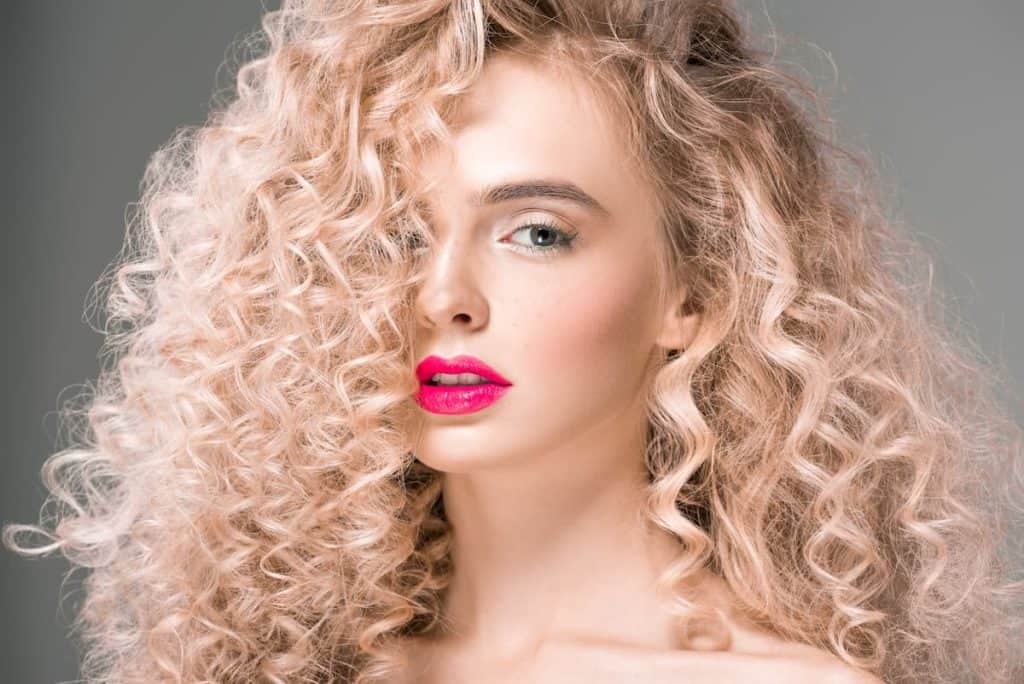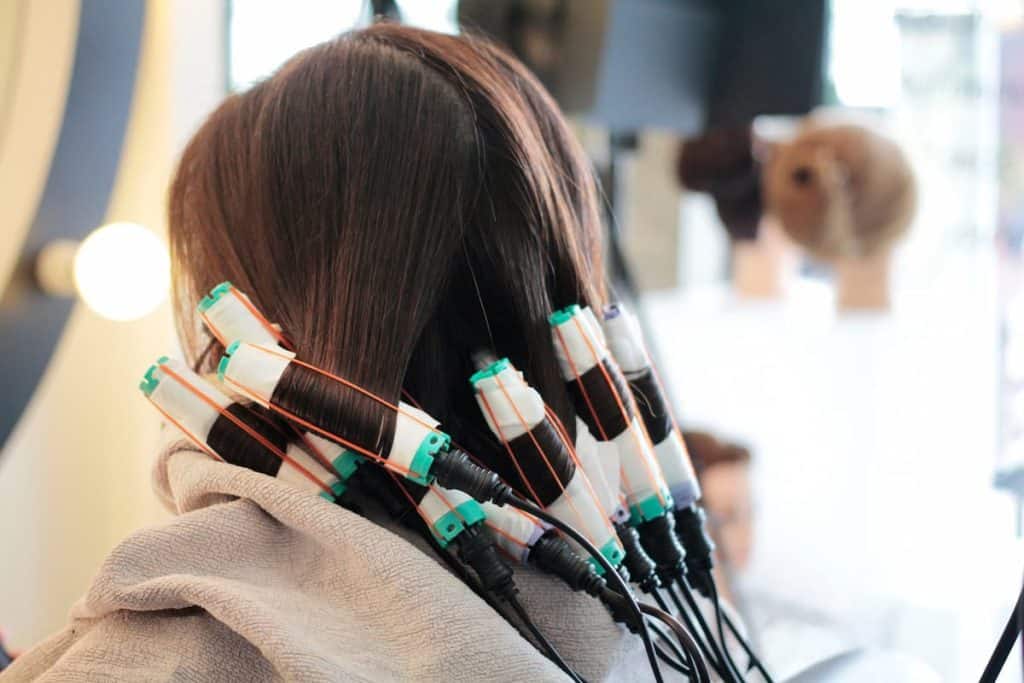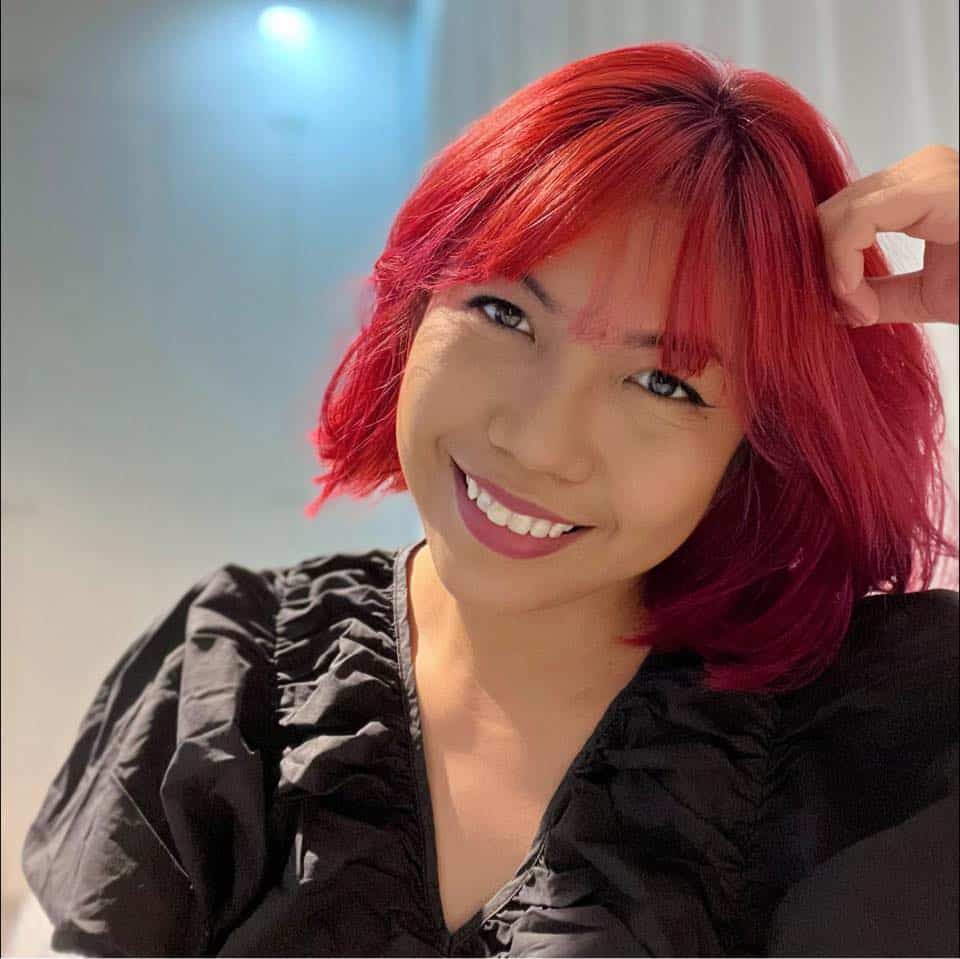11 Types of Perms for Various Hair Types: Your Ultimate Guide
This post may contain affiliate links, which means I may receive a small commission, at no cost to you, if you make a purchase.
Tired of flat, lifeless hair? A perm may be the solution you’re looking for!
Now if you’re not sure how to find the type of perm for your hair type, we’ve got you covered.

In this article, we’ll give you a rundown of the most common types of perms and their pros, cons, life span, and more. This way, you can determine which is best for your unique needs and desired style.
Whether you want tight, fabulous curls or loose, relaxed beach waves, we’ll help you discover the best perm that will give new life to your locks.
| Type of Perm | Hair Type | Result | Duration |
|---|---|---|---|
| Spiral Perm | Thin, curly, shoulder-length to long hair | Tight, springy, twisted curls that add volume to the hair | Six months |
| Beach Wave Perm | Thick, straight hair | Slightly messy waves for a surfer chick vibe | Four months |
| Pin Curl Perm | Short to medium-length straight or wavy hair | S-shaped curls created with a curling iron and pins | Three to six months |
| Body Wave Perm | Fine, straight, long hair | Full, relaxed look with large, loose waves | Three to six months |
| Digital Perm | Straight and thin hair | Soft curls or waves | Up to one year |
| Spot or Partial Perm | Uneven curly hair; thinning Hair | Neat-looking curls on specific areas of hair | Four to five months |
| Root Perm | Flat, short hair | Lifted hair with more volume at the roots | Two months |
| Stack Perm | Straight-cut hair or hair not cut in layers | Curls create the illusion of shaggy layers. Stacking hot rods on middle and lower sections. | Four to five months |
| Multitextured Perm | Medium-length to long straight or wavy hair | Natural-looking curls of varying sizes and tightness | Two to three months |
| Volumizing Perm | Flat, straight hair of any length | Looser, relaxed waves for full-bodied hair | Six weeks |
| Straight Perm | Curly or wavy hair of any length | Smooth, straight hair | Six to seven months |
Table of Contents
11 Different Types of Perms
Ready to learn all about various perm types?
Join us as we take a deep dive into each one and uncover the techniques and secrets behind its charm and allure to help you discover the perfect perm type for full, luscious, beautiful locks.
1. Spiral Perm

The spiral perm gives a bit of a retro look with springy, bouncy curls.
Best for: People with thin, shoulder-length to long hair and those who already have curly hair.
How it works: This process involves rolling the hair vertically onto a perming rod and applying a strong chemical solution to the hair. Your stylist can vary the curl size by changing the rod size.
The result: You’ll have very tight, springy, twisted curls that add volume to your hair. Each curl extends from the root to the tip. These curls bounce back when you pull and release them.
How long it lasts: Six months
Quick Tip
Use products that are specially formulated for curly hair to keep your curls’ shape and definition.
2. Beach Wave Perm

True to its name, a beach wave perm will give you the surfer chick vibe.
Best for: Beauties with straight, thick hair.
How it works: The hairstylist uses flexi rods (the soft, spongy ones) to roll the hair loosely and then saturate it with a curling solution.
The result: You’ll have slightly messy waves that aren’t quite a curl.
How long it lasts: Four months
Quick Tip
Don’t put your hair in tight hairstyles like ponytails and braids after getting this perm to prevent disrupting the wave pattern.
3. Pin Curl Perm

Permanent pin curls can surely breathe some life and charm into limp hair.
Best for: People with short to medium-length straight or wavy hair.
How it works: Traditionally, in the ’50s, a set of curlers or heating tools and a curling lotion or solution were used to set the curls of a pin curl perm for days to weeks.
But nowadays the curls are made by rolling up the hair and then pinning it. Then the usual chemical perming solution will be applied to set the curls.
The result: Your curls will be more S-shaped than spiral.
How long it lasts: Three to six months
Quick Tip
Do not wash your hair for 48 hours after perming so the curls can be fully set.
4. Body Wave Perm

If you want natural-looking waves that don’t need too much maintenance, the body wave perm is for you.
Best for: Individuals with fine, straight, long hair.
How it works: This perm uses large rollers to get natural waves. However, unlike the beach wave perm, hair is wrapped tightly around perm rollers and not flexi rods. The process produces tighter, more defined curls instead of loose waves.
The result: Your hair will get a full, relaxed look with large, loose waves.
How long it lasts: Three to five months
Quick Tip
Stay away from curling irons or straighteners to keep this style.
5. Digital Perm

The digital perm is a popular hair trend that’s perfect for transforming straight hair into beautiful wavy locks. It refers to hot perms in general.
Best for: People with straight and thin hair.
How it works: Your hairdresser uses gentler chemicals and heated rods regulated by a professional digital machine. The waves or curls can also be customized by the machine according to the look you want.
The result: You’ll have full, soft waves or curls.
How long it lasts: Up to a year
Quick Tip
Since this perm can last for a long time, you can consider getting a trim every three months to make sure your curls don’t get weighed down and tangled.
6. Spot or Partial Perm

Cover a spot of thinning hair with neat-looking curls or perm only a specific area of your hair using the spot perm technique, also known as the partial perm.
Best for: People with uneven curly hair or thinning hair.
How it works: This has the same process as cold perms, but the perming is done on only a specific section or area of the hair.
The result: You can customize your curls to look similar to the rest of your hair.
How long it lasts: Four to five months
Quick Tip
Nourish your locks with hydrating treatments after you get this perm.
7. Root Perm

The root perm adds volume and lift to your hair at the roots. It is also used as a touch-up to already permed hair that is starting to grow out.
Best for: Anyone with flat, short hair.
How it works: This is a version of a spot perm that is done at the roots, 2 to 3 inches from the scalp.
The result: Hair is lifted and has more volume.
How long it lasts: Two months
Quick Tip
Consider wearing a silk scarf over your head when sleeping to maintain the shape of your curls.
8. Stack Perm

Add the fullness and softness from the ’70s to your hair’s overall look with the stack perm, which was also sometimes called the disco wedge.
Best for: People with straight-cut hair or hair that is not cut in layers.
How it works: Hot rods of different sizes are stacked on the middle and lower sections of the hair. The top part of the hair is left in its natural state and sometimes even straightened to become smoother.
The result: The curls create the illusion of shaggy layers.
How long it lasts: Four to five months
Quick Tip
Use a deep conditioner once a week to maintain the hair’s smoothness.
9. Multitextured Perm

With a multitextured perm, you can have an effortlessly beautiful look with varying curls ready the moment you get out of bed!
Best for: People with medium-length to long straight or wavy hair
How it works: The stylist will do a cold perm but use different sizes of rods.
The result: Your waves or curls will look more natural as this perm will make them vary in size and tightness.
How long it lasts: Two to three months
Quick Tip
Keep your curls bouncy with essential oils for curly hair or leave-in conditioners.
10. Volumizing Perm

The volumizing perm is a low-commitment way of having full-bodied hair.
Best for: Those with flat, straight hair of any length.
How it works: In this technique, the stylist uses larger sizes of rods for the purpose of adding volume. It may be done with heat or without heat. However, the hairdresser will only apply a neutralizer after the rods have been removed.
The result: Removing the rods before neutralizing creates looser, more relaxed waves.
How long it lasts: Six weeks
Quick Tip
Keep the quality and texture of your curls by using products for permed hair.
11. Straight Perm

This perm takes up to eight hours to do, so make sure that you plan ahead or take a day off for this procedure.
Best for: Beauties with curly or wavy hair of any length
How it works: The stylist applies a chemical solution much like the one used in hot perms. They will then wash and dry the hair, then straighten it with a flat iron. After that, they will apply a neutralizer.
The result: Also known as reverse perm, the straight perm gives you smooth, straight hair.
How long it lasts: Six to seven months
Quick Tip
Shampoo less frequently to maintain the smoothness of your hair, and make sure to use a shampoo designed for permed hair.

What Is a Perm?
Perm is short for permanent wave.
It’s a curling process that involves setting the hair in waves and curls using curling rods and chemicals, primarily ammonium thioglycolate.
These chemicals change the hair’s structure and texture. And because chemicals are involved, the style lasts for a long time, although its maintenance involves special products and a new hair care routine.
Traditional Perm vs. Modern Perm
With our list of various types of perms, you may have noticed that most of the perms don’t resemble the tight, springy curls we typically associate with perms.
This is because those curls are typically characteristic of a traditional perm, and there are now modern perms.
But first, how exactly does the traditional perm differ from modern perms? Here’s a quick comparison of their differences.
Comparing Traditional vs. Modern Perms
| Traditional Perms | Modern Perms | |
|---|---|---|
| Results | Tight, coily curls; big voluminous hair | Offers various options: big curls, loose waves, and even straight locks |
| Tools Used | Hard perm rods, some with rubber bands; strong chemical solutions | Diverse tools and techniques tailored to suit different curl shapes |
| Chemicals | Strong chemical solutions used; heat application in some cases | Gentler chemicals, resulting in minimal damage to hair |
| Maintenance | High maintenance; frequent touch-ups required | More low-maintenance styles preferred; less frequent touch-ups needed |
Traditional Perm
The traditional perming method you’re probably used to was popular in the ’70s to the ’80s, giving you that big, voluminous hair with tiny coily curls.
Both men and women sported the look. The most iconic hairstyle you might recognize is the permed curls Sarah Jessica Parker flaunted.
Traditional perming uses hard perm rods, some with rubber bands, to hold the hair. Strong chemical solutions are involved in the process of setting the curl. Some techniques use heat; some don’t.
Traditional perms are still done today, though not as common anymore because people prefer lower-maintenance styles and gentler perms these days.
Modern Perm
Stylists have added new perming techniques that give people more options in shape and definition instead of the classic tight curls.
This modern approach to perm offers versatility to give you big curls, loose waves, or even straight hair. Yes, perms don’t necessarily mean curls anymore!
Modern perms also result in minimal damage because gentler chemicals are used.
Hot Perm vs. Cold Perm

Perms can also be categorized as hot or cold, depending on how they’re done.
Both hot and cold perms use the rod and solution process, but there are major differences between them.
Here’s a quick look at what distinguishes hot and cold perms from each other:
Comparing Hot Perms vs. Cold Perms
| Hot Perms | Cold Perms | |
|---|---|---|
| Process | Rods are heated; chemicals are applied | No heat involved; chemicals and rods used |
| Curl Type | Looser, softer curls | Bouncy curls or tight ringlets based on rod size |
| Versatility | Can be adjusted to different styles and sizes | Offers specific curl patterns |
Cold perm, as you can guess from the name, doesn’t involve heat. It only uses chemicals and rods or rollers to add waves or curls.
A cold perm offers bouncy curls with pin-up waves (think Marilyn Monroe) or go right up to the root with tight little rings (think Mariah Carey in her 20s). It all depends on the size of the rods that your hairstylist will use.
In hot perms, rods are heated up, and chemicals are added too. This results in looser, softer curls that can be adjusted to different styles or sizes you want.
Can You Perm Before or After Coloring Your Hair?
No, dyeing your hair right after getting a perm or vice versa is not recommended; doing so can greatly damage your hair.
Instead, wait two weeks to a month between treatments so your hair can recover.
Say Hello to Full, Gorgeous Hair With the Right Type of Perm!
Isn’t it great how a perm can offer so much more than spiral curls? Thanks to innovative hair experts, a perm can now be enjoyed by pretty much everyone.
Best of all, perms can lift and give body to lifeless locks!
Can’t Commit to a Perm?
Check out these articles about different ways to curl your hair:


